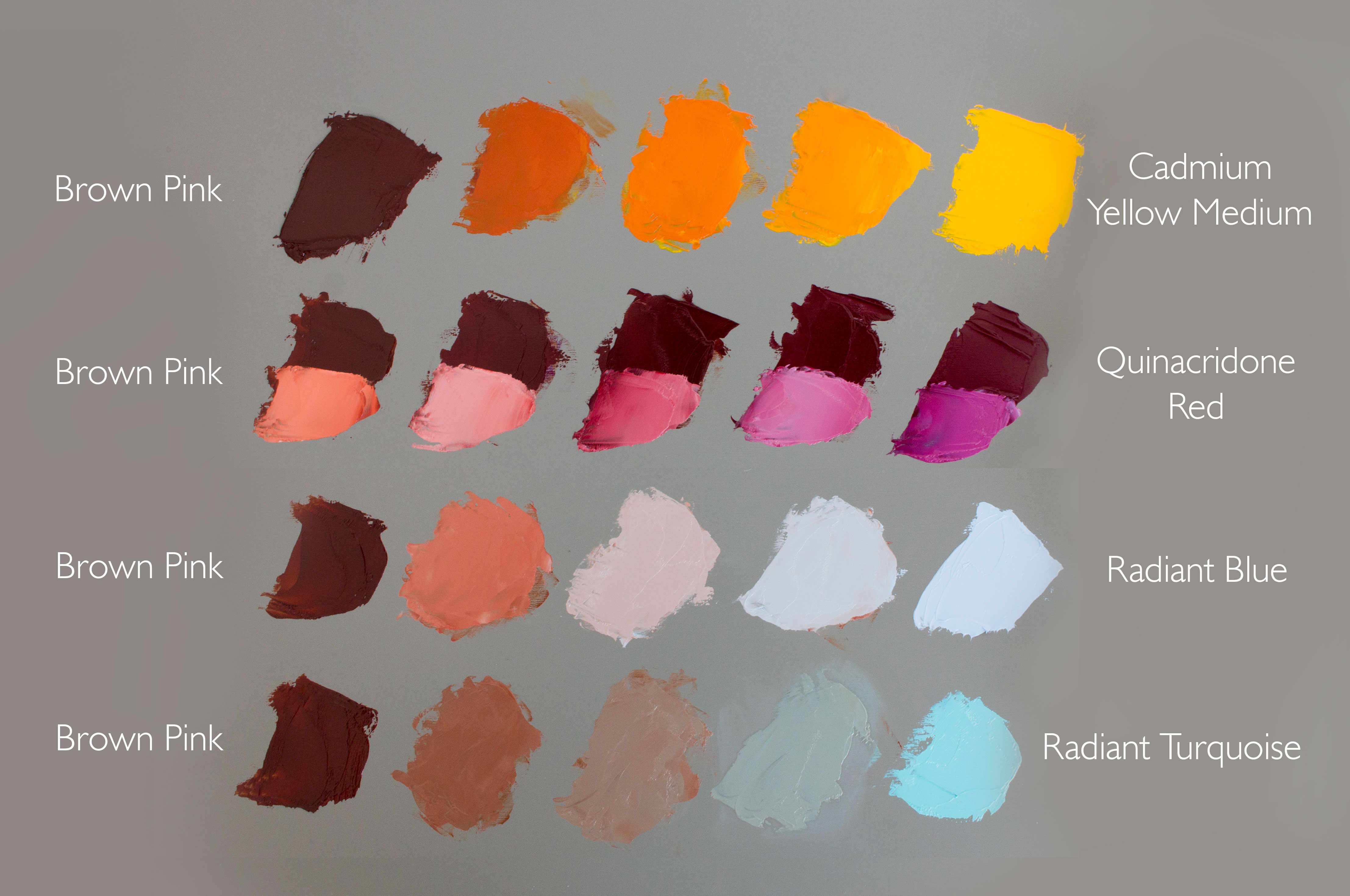Brown Pink

Nathan Oliveira “Couple with Red,” 2003 Oil and Galkyd on polyester canvas, 50” x 42″
Prior to our contemporary use of the word, “pink” to describe light reds or rose colors, this term referred to pigments that were created by the process of physically attaching an organic dye onto an inorganic white powder. Derived from berries and later from bark, “pink” pigments included “yellow pink,” “brown pink” and “rose pink,” to which our connotation with the light reddish color ultimately stuck.
Brown Pink remained on artists’ palettes as a valuable glazing color until the nineteenth century. The “pink” and “lake” pigments were made obsolete as painters demanded more durable pigments.
Gamblin Brown Pink was first developed by Robert Gamblin as an etching ink for his friend Nathan Oliveira, a key artist in the Bay Area Figurative Movement. Recognizing its value as an oil color, Brown Pink was added to our Artist’s Grade line in 2002.
Pigment composition
Brown Pink is a lightfast mixture of Transparent Earth Red and Perylene Red, thereby boosting the chroma (intensity) of an earth color with a modern organic pigment.
How is Brown Pink useful?
In an effort to expedite mixing time I added Brown Pink to my studio palette. As a convenience color, originally it was meant to eliminate repeated mixing of red and green to get a nice warm brown. What I found instead was a beautifully rich and unique color that cannot be replicated or replaced. It has earned a permanent home in my color space. Not only is it much more brilliant than other tubed or mixed red-browns, it is also transparent which gives me so many more options. It is immediately good for staining and glazing. I use it when a deep, warm, dark is needed as well as a light, intense orange. Some of my favorite mixtures are Brown Pink with Cadmium Yellow Medium, Radiant Blue, or Radiant Turquoise.
Brown pink mixtures

Take me back to the Experience Color menu


